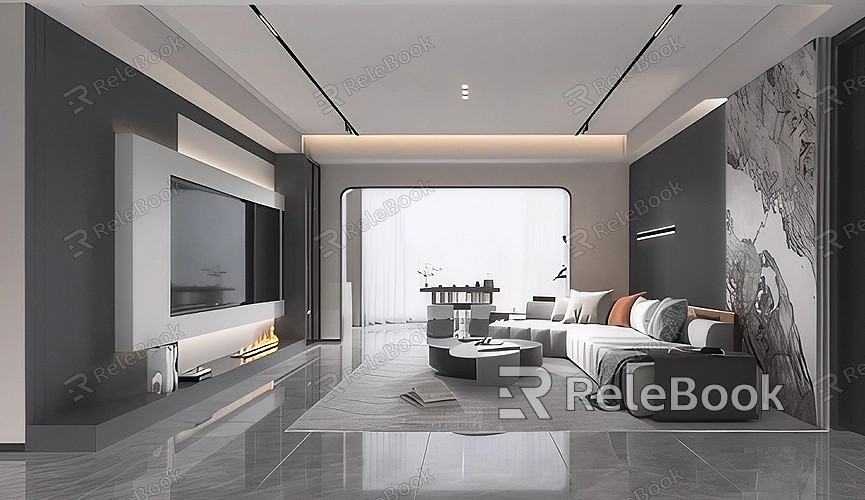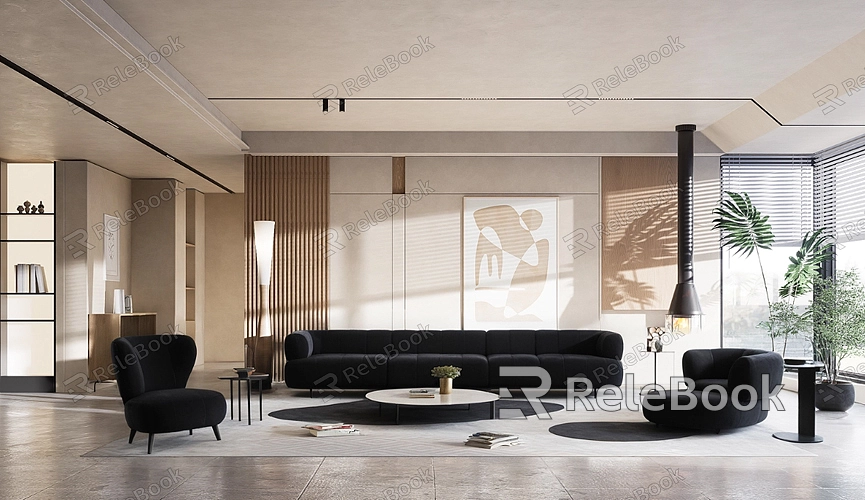How to Render Maya 3D Models?
In modern 3D modeling and animation, rendering is an essential step. Maya is a powerful 3D modeling and rendering software widely used in film production, game design, and virtual reality. Rendering allows artists to transform 3D models created in Maya into images or animations, showcasing detailed lighting effects, material textures, and realistic environmental atmospheres. So, how can you render 3D models in Maya? This article will start with the basics of rendering and gradually delve into how to use Maya's features to enhance rendering quality.

Basic Concepts of Maya Rendering
Before diving into the specifics of rendering in Maya, it's important to understand some basic concepts. Rendering is the process of converting all the elements in a 3D scene—including models, textures, lights, cameras, and more—into a 2D image or animation. The quality and effect of rendering directly impact the final visual output, and Maya provides a variety of rendering engines to choose from depending on your needs.
Maya’s built-in rendering engines include Arnold, RenderMan, and Mental Ray (though Arnold has replaced Mental Ray in newer versions). Among these, Arnold is the default rendering engine in Maya and is widely used for high-quality ray-traced rendering, making it ideal for everything from still images to animated sequences.
Setting Up the Rendering Environment
Before you can render, you need to properly set up Maya's rendering environment. Here’s how to get started:
1. Choose Your Renderer
In Maya, the first step is selecting the rendering engine. You can do this by going to the Render menu and accessing the Render Settings window, where you can choose the renderer you want to use. The most common renderers are:
Arnold: Known for producing high-quality ray-traced renders with strong global illumination (GI) and material effects.
RenderMan: A flexible and fast renderer suited for large-scale production rendering.
Mental Ray: Though no longer updated, it’s still used in some projects for specific tasks.
2. Configure Render Settings
Once you’ve chosen your renderer, you need to adjust specific render settings. Key settings include:
Resolution: Defines the width and height of the rendered image. A higher resolution results in finer detail but increases render time.
Sampling: Determines the clarity of the image. The higher the sampling, the sharper the render, but it also increases render time.
Output Format: Choose the output file format, such as JPEG, PNG, EXR, etc.
These settings can be adjusted in the Render Settings window under various tabs.

Adjusting Lights in the Scene
Lighting is one of the most crucial aspects of rendering. It not only affects the brightness of the scene but also defines the shape and texture of the objects. Maya offers multiple types of lights, which simulate everything from natural sunlight to artificial light sources. Common light types include:
Point Light: Emits light from a single point, similar to a light bulb.
Directional Light: Parallel light rays are typically used to simulate sunlight.
Spotlight: Focused light, often used in stage lighting.
Ambient Light: Light that evenly illuminates the entire scene, used for simulating indirect light.
1. Tips for Lighting
Use Global Illumination (GI): Global illumination simulates light bouncing around the scene, enhancing realism. Enabling GI in Arnold can make light interact more naturally within the scene, reflecting off surfaces and casting realistic shadows.
Adjust Shadows: Shadows add depth and realism. Ensure that your light sources cast shadows where appropriate, and tweak the shadow softness or transparency for more lifelike effects.
Adjusting Materials and Textures
Materials and textures define the surface properties of a 3D model, and setting them up correctly can significantly enhance the quality of your render. Maya offers several material types, such as Standard Surface, Metal, Glass, and more. Each material comes with its own set of adjustable properties.
1. Types of Materials
Standard Surface: A flexible, all-purpose material that works for most objects and has parameters for diffuse, specular reflection, roughness, and more.
Glass Material: For simulating transparent materials, such as glass or water. It includes settings like refraction, transparency, and IOR (Index of Refraction).
Metal Material: Used for simulating metal surfaces with strong reflection properties.
2. Using Textures
Textures add surface detail, making models look more realistic. In Maya, you can apply various types of textures, such as color maps, roughness maps, and normal maps. Textures are typically mapped onto a 3D model using UV unwrapping, and you can use Maya’s Hypershade editor to fine-tune material properties and apply textures.
Rendering Optimization
Rendering can be a computationally intensive process, especially with high-quality settings. To improve rendering efficiency, several optimization techniques can be employed:
1. Lowering Sample Rates
Higher sample rates generally result in cleaner renders, but they also increase render times. If the image quality is already satisfactory, lowering the sample rate can help reduce render times while still achieving an acceptable result.
2. Using Proxy Objects
Proxy objects are low-resolution versions of high-poly models used to reduce memory consumption and render time. You can use proxy objects during the scene-building phase and swap them for high-resolution models when rendering the final output.
3. Layered Rendering
For complex scenes, consider rendering different elements (background, characters, props, etc.) on separate layers. This allows for easier post-production compositing and can speed up the rendering process since only individual layers need to be re-rendered if adjustments are needed.
Post-Processing and Compositing
Rendered images or animations often require post-processing to enhance visual effects or correct any issues. Maya integrates well with many composing software programs, like Nuke and After Effects, where you can adjust color grading, add blur effects, compress dynamic range, and more.
Maya rendering is a critical process in converting 3D models into realistic images or animations. By properly configuring your renderer, adjusting lighting, materials, and textures, and optimizing render settings, you can significantly improve the final output. Whether you’re working on static renders or animations, mastering these techniques will ensure that your work stands out with high-quality results. For high-quality 3D models and textures to further enhance your rendering projects, be sure to visit Relebook’s website, where you can download the resources you need to take your work to the next level.
FAQ
Why does my rendered image look too dark?
This could be due to improper lighting settings. Check if there are enough light sources in your scene or if global illumination is enabled. Also, make sure no shadows are blocking your light sources.
What can I do if my render time is too long?
Consider lowering the sample quality, using proxy objects, or simplifying your scene to reduce render time. You can also adjust the settings for non-critical elements to speed up the process.
How can I make materials look more realistic?
Use advanced textures and details, such as normal maps, reflection maps, and roughness maps. Additionally, adjusting the material's roughness and reflection settings to better match real-world optical properties will enhance realism.
Are Maya's default render settings good enough?
While Maya’s default settings can suffice for basic renders, tweaking the settings to match the specific needs of your scene will yield higher-quality results. Adjusting resolution, sampling, and light settings is often necessary for achieving professional-level output.

